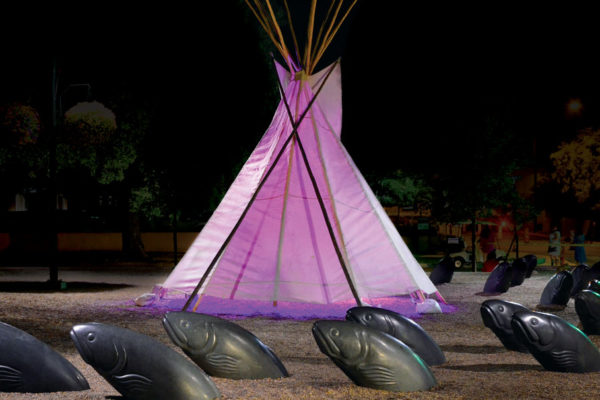Continued (page 2 of 4)
Keet Seel/Kawestima
Adventure does not necessarily connote a positive experience. We found this out when we embarked on a two-day, 17-mile round-trip journey to Keet Seel/Kawestima, considered the best-preserved cliff dwelling in the Southwest if not the entire country. The monument’s politics alone should have warned us we were in for some complications. The Hopi believe they are descended from Keet Seel’s inhabitants, but the dwelling is located in Navajo National Monument, which is managed by the National Park Service but located on the Navajo Reservation. Convoluted enough?
Before we go any further, let me be completely honest with you: Unless you are incredibly fit and have no issues with hiking in 100-plus degree temperatures with no shade in sight, do not attempt this hike. For reasons we don’t completely understand, park management only allows people to visit the dwellings in the summertime, and the heat in the canyon is extreme. If you’ve been reading this magazine for any number of years, you know that Sedona Monthly is a staff of adventure-seeking, outdoor-loving hikers. We’ve been to the bottom of the Grand Canyon and conquered more than 100 trails in Red Rock Country. But you will never, ever get us back down into Tsegi Canyon. Ever.
Our group of five hiked to Keet Seel/Kawestima at the beginning of July, less than two months after our inspiring journey to Betatakin/Talastima. (Keet Seel/Kawestima is only open Memorial Day weekend through the beginning of September.) You must obtain a permit to hike to Keet Seel/Kawestima, which we procured in May. Obtaining the permit for our desired hiking dates was not difficult. In fact, we were the only group of people in the canyon that Saturday. The National Park Service only allows 20 people to visit Keet Seel/Kawestima each day because of the dwelling’s fragile nature.
Hikers are required to attend a mandatory orientation at either 3:30 p.m. the day prior to your hike or 8:15 the morning of your hike. We opted for the 8:15 a.m. orientation, which meant leaving Sedona at 4 a.m. Navajo National Monument observes daylight savings time, so keep in mind that in addition to the three-hour drive from Sedona, the monument is one hour ahead. The orientation lasted fewer than 15 minutes (possibly because the rangers were in the middle of trying to locate another pair of lost hikers), and then we were strapping on backpacks that weighed anywhere from 25 to 50 pounds and making our way into Tsegi Canyon.
Tsegi and its side canyons, including Keet Seel Canyon, are remarkably beautiful – there’s no doubt about that. The hike begins with a 1.5-mile hilly jaunt along the rim of the canyon before reaching an abrupt, steep descent. Take a moment to pause at Tsegi Point before you head downhill. The web of canyons in front of you are made up of unusual red rock formations studded with pinion and juniper trees. Far below, you can see Laguna Creek, which can range from a trickle to a flood depending on the time of the year (rangers will tell you time and again that you cannot drink from the canyons’ creeks; as soon as we reached the bottom, we understood why). The sky above is an intense blue that you can only find when you’re hundreds of miles away from the closest city.
The descent into the canyon is steep – steeper than the Grand Canyon’s Bright Angel Trail. You are hiking over loose railroad ties fashioned into steps, baking hot sand dunes that seem endless and two sets of sandstone switchbacks. The trail drops 1,000 feet in one mile. When we reached the bottom of the canyon, 2.5 miles into our journey, we dropped several liters of water underneath a juniper tree. The rangers do encourage you to make water drops along your hike so you aren’t carrying two days (and a minimum of two gallons per person) of heavy water with you on your entire hike. We made two water drops in the canyon. At the first drop, we rested in the shade of the juniper tree. Little did we know that it would be the last shade we would experience until we landed at our campground six miles away.



